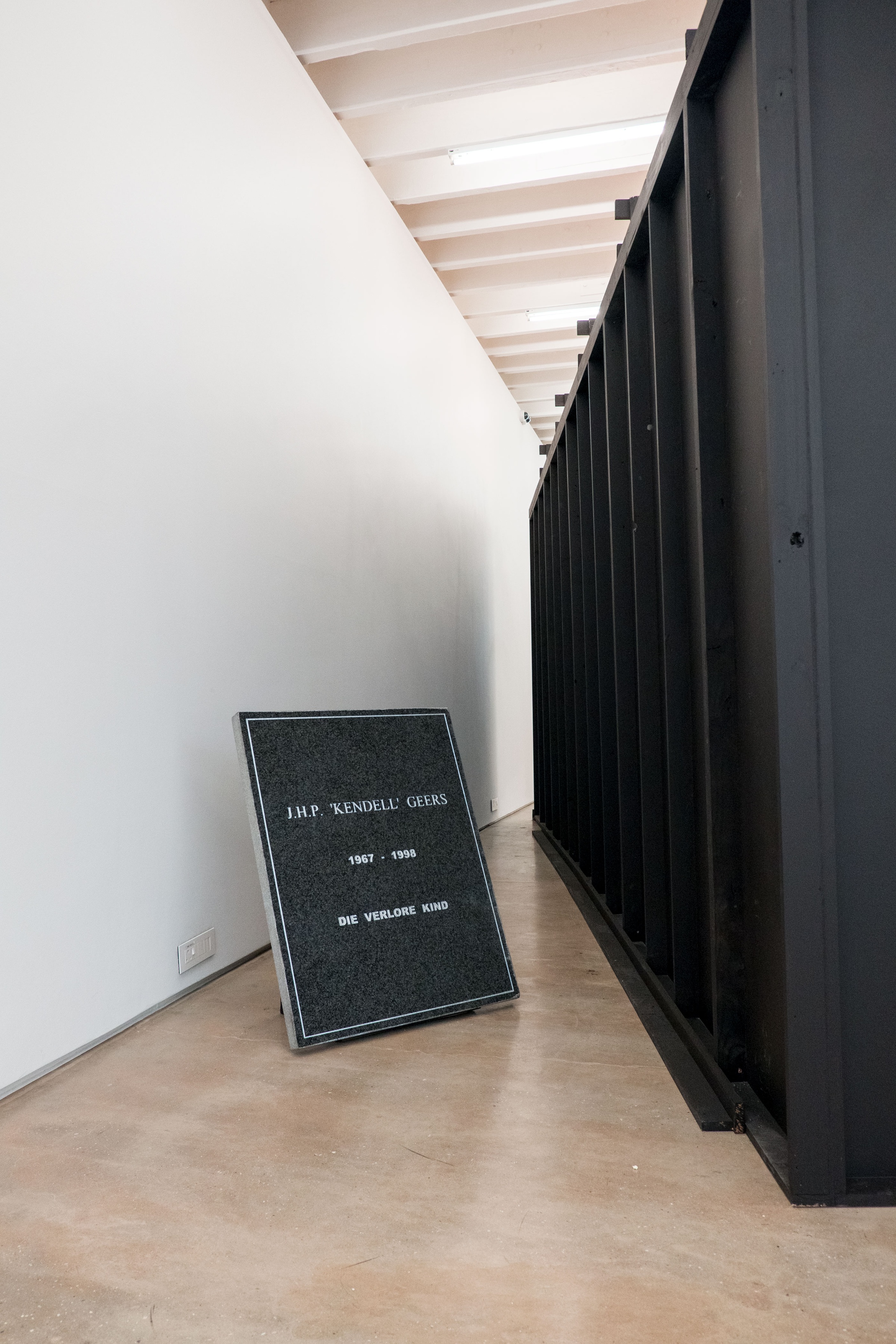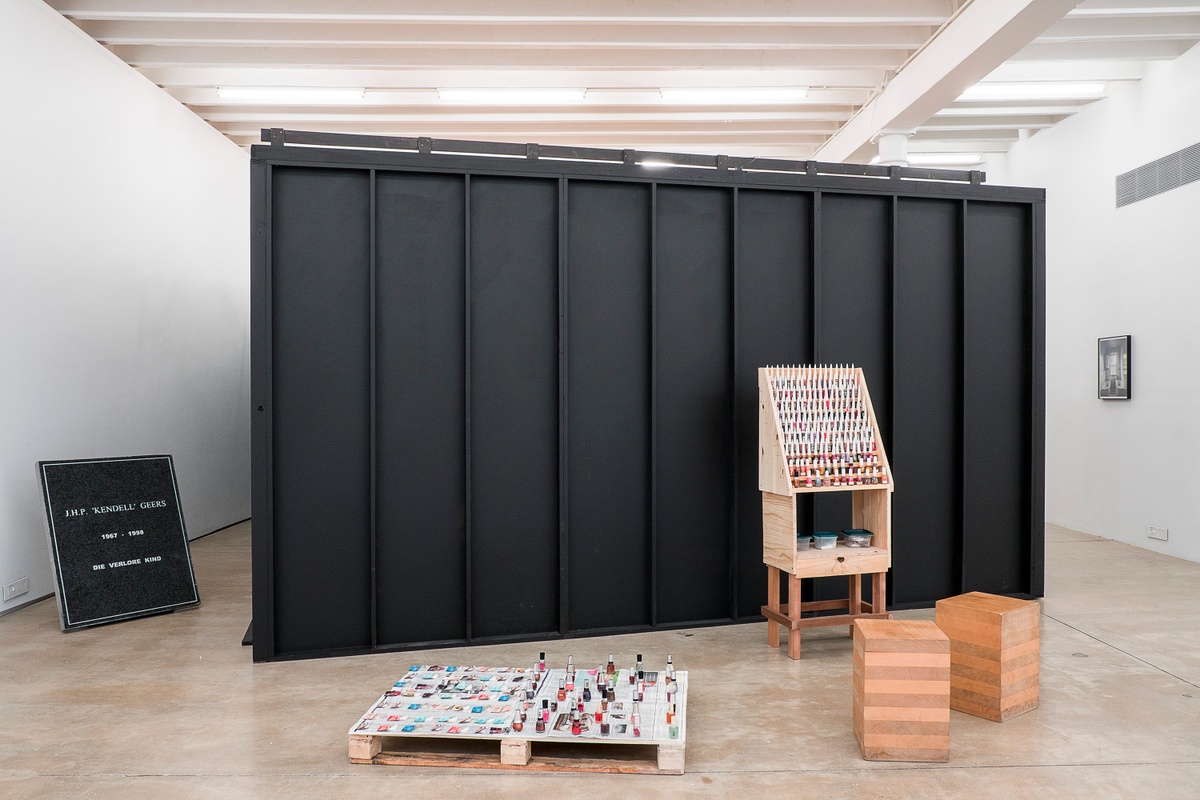Avant Car Guard

In a gesture of happy fratricide, Avant Car Guard buried fellow artist Kendell Geers on a bleak winter’s day somewhere outside Boksburg. A photograph was taken to celebrate the occasion – Avant Car Guard Bury J.H.P ‘Kendell’ Geers – and a tombstone inscribed. J.H.P ‘Kendell’ Geers, it reads, 1967–1998. Below, the words Die Verlore Kind (the lost child, the prodigal son). Shortly after the burial, however, some inconsistencies became apparent. Indeed, by all accounts, Geers was – and remains – very much alive and is enjoying a successful art career in Belgium. (Kendell is the artist’s chosen name, and 1968 his chosen year of birth – the tombstone corrects him on both counts, indicating his nom de plume with inverted commas of unclear inflection). Why his fictional death took place in 1998 is anyone’s guess, as too is the date chosen for his burial nine years later. Regardless, the work is one of Oedipal revolt, a disavowal of influence – South Africa’s foremost conceptual artist, the original enfant terrible, buried by a band of upstarts.
Remembered for their Highveld anarchy and bad-boy attitude, Avant Car Guard offered the South African art world unasked-for criticisms and unflattering reflections. Based in Johannesburg, the trio – Zander Blom, Jan-Henri Booyens and Michael MacGarry – rallied together around a shared passion for punk rock, Black Label beer, and a general disregard for the local art scene. With mordant wit, the three lampooned the contemporary art market, its artists and gallerists, in works both flippant and mocking. While many delighted in their brash one-liners and reprobate charm, not everyone was convinced by their mutiny. Avant Car Guard’s project, though “highly entertaining and thought-provoking,” critic Mary Corigall wrote, “does parade a puerile façade bereft of substance.” In 2012, the collective dissolved. All three artists had become respected in their own rights, with gallery shows to make and commitments to fulfil. In the end, the object of their critique – the unholy art market – had its appeal.
